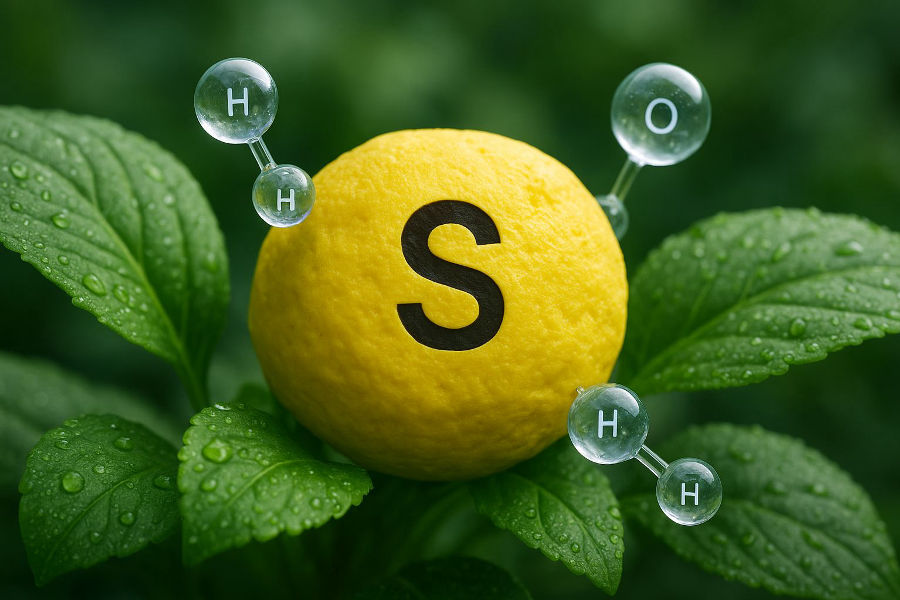What is the role of sulphur in plants?
Sulphur is often referred to as the “hidden nutrient” in plant nutrition. Although plants require it in smaller quantities than primary nutrients like nitrogen, phosphorus, and potassium, its importance is equally significant. From forming essential proteins to improving oil content and enhancing crop quality, sulphur plays a crucial role in plant health, yield, and productivity.
Why plants need sulphur
Sulphur is a secondary macronutrient that plants absorb mainly as sulphate (SO₄²⁻). Inside the plant, it becomes part of amino acids, vitamins, enzymes, and defence molecules, which are essential for healthy growth, development, and yield formation.
Essential functions of sulphur in plants
1. Builds proteins and plant structure
Sulphur is a key component of amino acids such as cysteine and methionine, which are essential for protein formation. These proteins are the building blocks of plant cells and are necessary for growth and development.
2. Boosts nitrogen use efficiency
Sulphur and nitrogen work together to form proteins. Even if nitrogen is available in sufficient amounts, plants cannot utilize it effectively without sulphur. Adequate sulphur improves nitrogen use efficiency and enhances yield.
3. Drives key metabolic processes
Sulphur activates vital enzymes and supports processes like photosynthesis, respiration, and nitrogen fixation. These metabolic activities are essential for energy production and overall plant growth.
4. Improves oil, flavour, and vitamin content
Sulphur is involved in the synthesis of vitamins such as biotin and thiamine. It also enhances oil content, aroma, and flavour in crops like mustard, sunflower, onion, and garlic, improving their quality and market value.
5. Enhances quality and marketability
Sulphur improves the protein content of cereals, the oil percentage in oilseeds, and the taste and nutritional quality of vegetables, making produce more valuable and market-ready.
6. Strengthens resistance against stress
Sulphur helps plants produce natural defence compounds that improve resistance to pests, diseases, and environmental stresses such as drought and temperature fluctuations.
Signs of sulphur deficiency
-
Yellowing of young leaves while older leaves remain green
-
Stunted growth and delayed maturity
-
Thin stems and poor branching
-
Reduced oil content and lower seed quality
Sources of sulphur
-
Sulphate-based fertilizers such as ammonium sulphate, potassium sulphate, and gypsum
-
Elemental sulphur, which slowly oxidizes in the soil
-
Organic matter, which releases sulphur during decomposition
